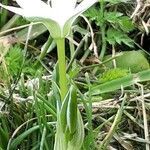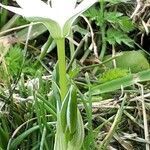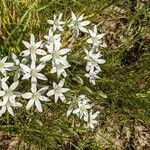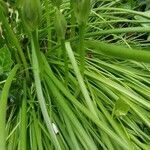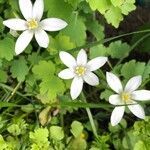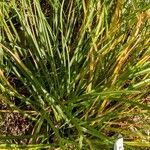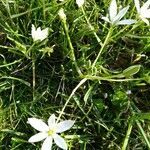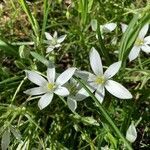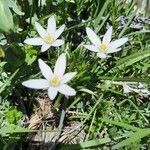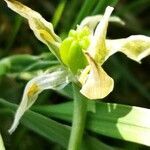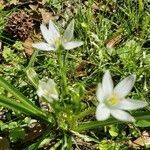Bulb renewed each year; lvs elongate, 2–5+ mm wide, with a white stripe on the upper surface; scape 1–3 dm; raceme 3–10-fld, the ascending pedicels longer than the internodes; bracts up to as long as the pedicels; fls erect; tep spreading, lance-oblong, 1.5–2 cm, white above, with a broad green midstripe beneath; ovary longer than the style; 2n=18–108. Native of Europe, escaped from cult. into roadsides and even fields and woods in our range. May, June.
A bulb plant. It grows 15-30 cm high and 8-10 cm wide. Normally there are several offsets forming tufts of leaves around the parent plant. The leaves are very narrow. They are 30 cm long. The leaves have a central silver stripe. The stout stems have numerous starry white flowers. They are tinted green at the centre. They have a green stripe on the back. The fruit is a capsule with 6 equal angles. The bulbs are very white. The bulbs are edible.
Leaves 6-9, linear, flat or channelled, to 30 cm long and 6 mm wide. Inflorescence corymb-like with 6-20 flowers, usually exceeding leaves; lower pedicels to 7 cm long, upper shorter. Perianth segments 15-20 mm long, white with an abaxial green stripe; stripe broader on sepals. Stamens with filaments entire. Ovary ovoid to obovoid, green or yellow. Capsule oblong or obovoid, with 6 obtuse angles.
